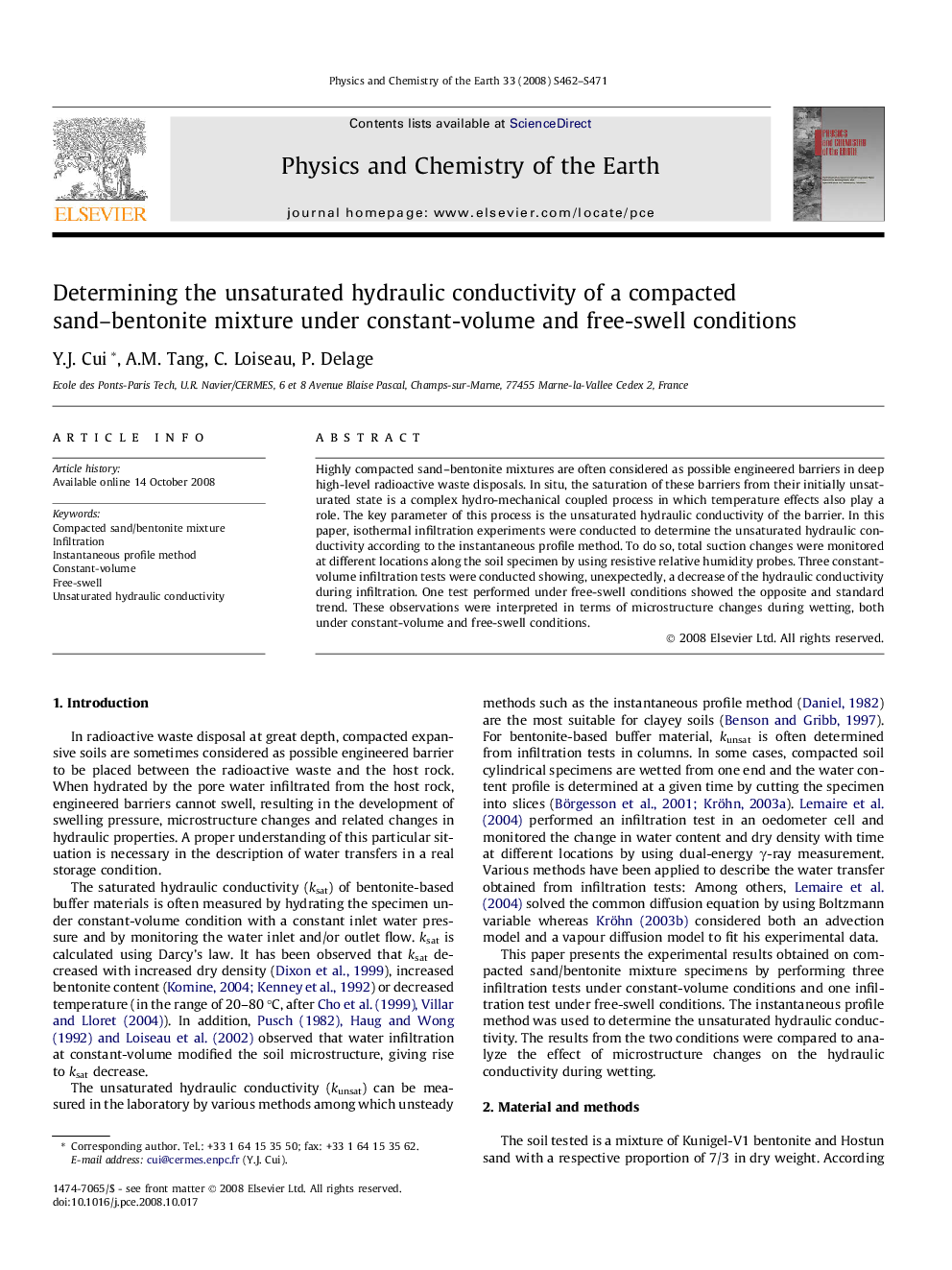| Article ID | Journal | Published Year | Pages | File Type |
|---|---|---|---|---|
| 4721655 | Physics and Chemistry of the Earth, Parts A/B/C | 2008 | 10 Pages |
Highly compacted sand–bentonite mixtures are often considered as possible engineered barriers in deep high-level radioactive waste disposals. In situ, the saturation of these barriers from their initially unsaturated state is a complex hydro-mechanical coupled process in which temperature effects also play a role. The key parameter of this process is the unsaturated hydraulic conductivity of the barrier. In this paper, isothermal infiltration experiments were conducted to determine the unsaturated hydraulic conductivity according to the instantaneous profile method. To do so, total suction changes were monitored at different locations along the soil specimen by using resistive relative humidity probes. Three constant-volume infiltration tests were conducted showing, unexpectedly, a decrease of the hydraulic conductivity during infiltration. One test performed under free-swell conditions showed the opposite and standard trend. These observations were interpreted in terms of microstructure changes during wetting, both under constant-volume and free-swell conditions.
